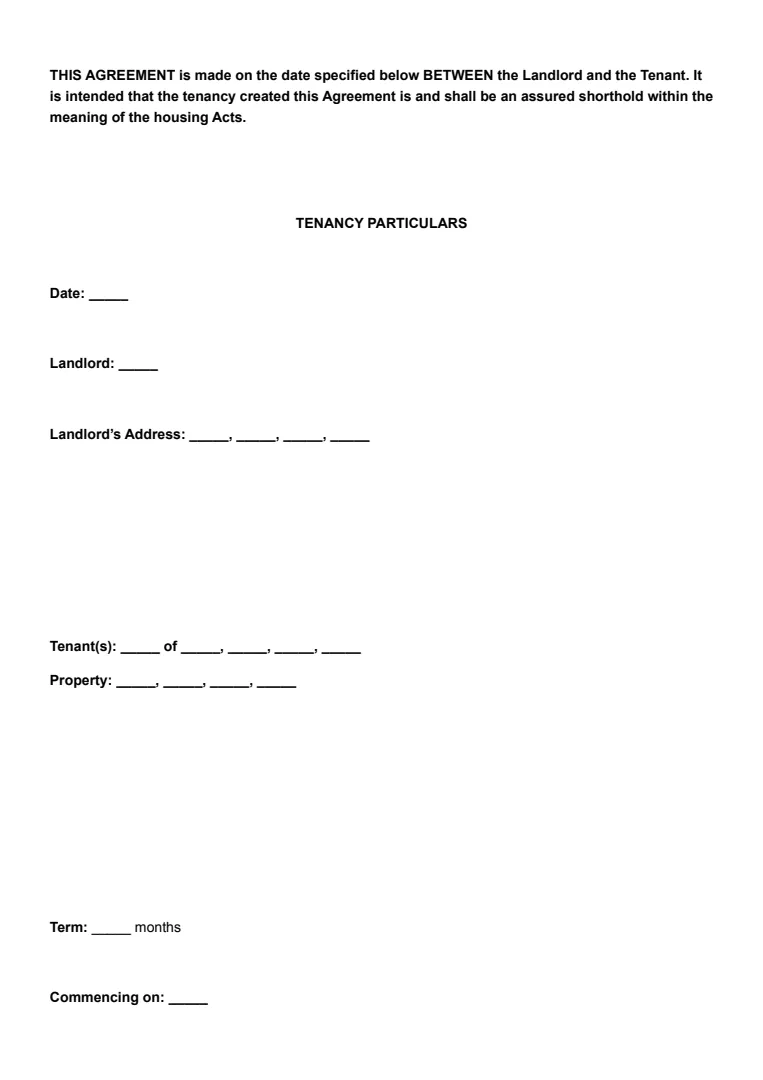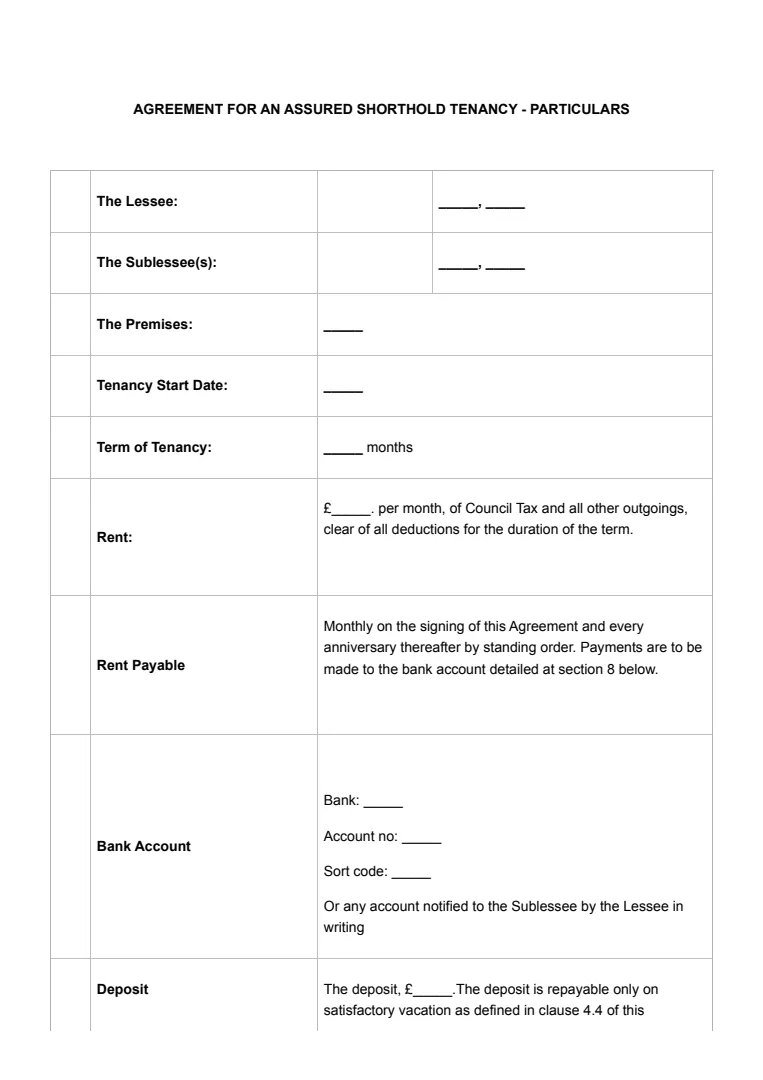What Is a Tenancy Agreement?
A tenancy agreement is a contract between a tenant and a landlord. If you’re the tenant, it sets out your rights to live in a rented property. It's essentially a consumer contract, meaning it should use plain and clear language. It must not contain any terms that are deemed 'unfair' or place you at a disadvantage.
Different Types of Tenancy Agreements
- Assured Shorthold Tenancy (AST): The most common type for private rentals in the UK.
- Assured Tenancy: Offers more security as it's harder for landlords to evict tenants.
- Periodic Tenancy: Rolls on a weekly or monthly basis without a fixed end date.
The tenancy agreement document outlines your obligations as a tenant, such as paying rent and maintaining the property. If you’re a landlord, it also details your responsibilities, such as repairs and maintenance.
Joint Tenants
If you live with others, your agreement might say you're 'jointly and severally liable'. That means you're all responsible for the rent, but you're also individually accountable.
Fixed-Term or Periodic Agreements
Agreements can be for a fixed term, like six months or a year, or they can be periodic. Fixed-term provides stability, while periodic offers more flexibility to end the tenancy.
A verbal agreement can also be binding, but having a written one is easier to manage in case disputes arise. Written agreements provide a clear reference for both parties.
When Is a Tenancy Agreement Needed?
A tenancy agreement is crucial anytime you plan to lease out or rent a property. This can include a flat, house, or even a room in shared accommodation.
The tenancy agreement sets the legal foundation and ensures everyone is on the same page about their rights and responsibilities.
You'll need a tenancy agreement at the start of your rental period. If you’re a tenant, before you move in, any expectations, like rent amount, payment frequency, and property rules, should be clearly documented. This helps avoid misunderstandings later.
If you're sharing with others, a tenancy agreement is needed to define who is responsible for what. Whether it's utilities or maintenance, having it in writing can save you a lot of stress.
A tenancy agreement is also necessary if there’s any change in terms. For example, if you want a pet or need to change the rental period, this should be updated in the agreement. It’s vital to keep things official and ensure both parties agree to the new terms.
An agreement is still beneficial if you rent from a landlord who also lives in the property.
It might not always be legally required, but having clear rules can seriously help maintain peace. Having a tenancy agreement gives you a safety net. It's there to protect both parties’ interests and provides a clear guide if any disputes arise.
Whether you’re a landlord, a first-time renter or an experienced tenant, don't skip this essential document.
How to Write a Tenancy Agreement
If you’re a landlord, creating a tenancy agreement might seem daunting, but with the right steps, you can draft a document that protects everyone involved.
Step 1: Identify the Parties
Firstly, the names and contact details of all parties involved, including the landlord and any tenants, should be clearly stated.
Having this information upfront helps in case any issues arise during the tenancy.
Step 2: Specify the Property
You need to describe the property in detail. This includes the full address and any included parts of the property, like a garden or garage.
Clarity here prevents confusion about what the tenant has access to.
Step 3: Include Rent Details
Clearly outline how much the rent is and how it should be paid, such as by bank transfer.
Indicate when it’s due, typically monthly, and mention any late fees or penalties for non-payment.
Step 4: Specify the Tenancy Term
Specify whether the agreement is for a fixed-term tenancy or a periodic tenancy. This sets expectations for both parties regarding the lease duration.
A fixed-term tenancy is typically six or twelve months, while a periodic tenancy rolls over month-to-month.
Step 5: Set Out the Terms and Conditions
This section should cover the responsibilities of both the landlord and the tenants. Consider aspects like maintenance, repairs, and behaviour guidelines.
Make sure these terms are in plain English and easy to understand.
Step 6: Use a Template
There are plenty of tenancy agreement templates available online to guide you.
Using a template can ensure you’ve included necessary clauses and legal obligations specific to your region.
Step 7: Include Signatures of All Parties and Dates
End the document with spaces for signatures and dates for all parties.
This makes the agreement legally binding and ensures everyone is aware of their responsibilities.













